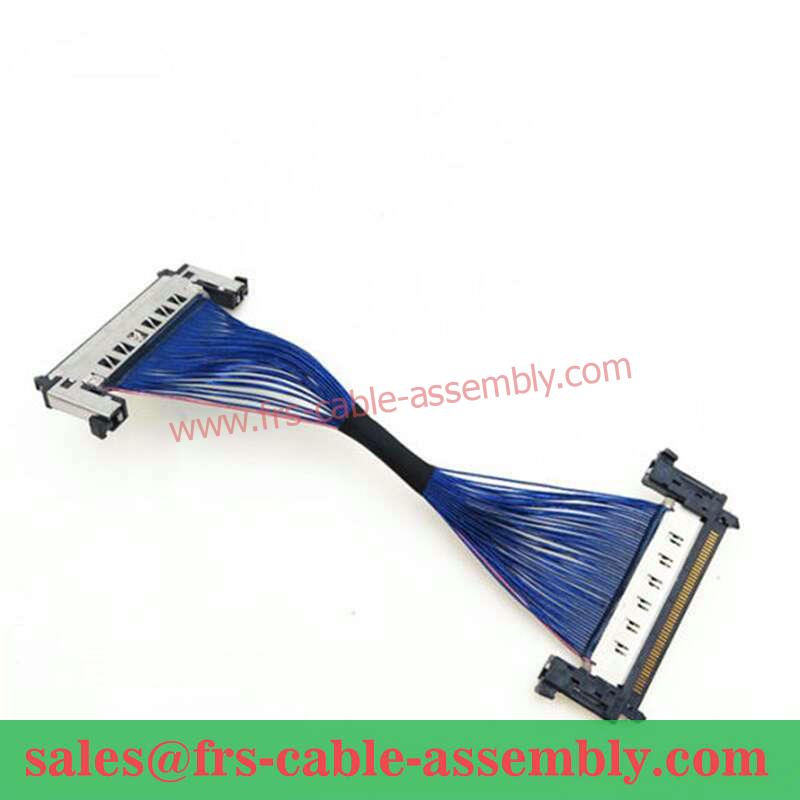MIPI Cable AssemblyMIPI Igwefoto Igwefoto Cable
Ihe na-esote ị ga-atụle bụ ogologo eriri. Ogologo eriri ahụ kwesịrị ịdị ogologo ruo ogologo oge iji ruo modul igwefoto…
Table of Contents
Ihe na-esote ị ga-atụle bụ ogologo eriri. Ogologo eriri ahụ kwesịrị ịdị ogologo ruo ogologo oge iji ruo modul igwefoto site na nhazi, ma ọ bụghị ogologo oge na ọ na-akpata nkwụsị mgbaàmà ma ọ bụ nnyonye anya. Ogologo eriri ahụ kwesịkwara iburu n’uche mgbe ị na-ahọrọ ụdị eriri. Dịka ọmụmaatụ, eriri ogologo nwere ike ịchọ eriri mkpuchi iji belata nnyonye anya.
Mgbakọ ihe mmetụta igwefoto

Multi-core Micro Coaxial
| Mgbakọta Coaxial Cable Assemblies | LVDS Coaxial Cable Assemblies | Mgbakọ ụgbọ elu/Aerospace Cable | Ultrasound Transducer Cable Assemblies |
| Mgbakọ Micro Coaxial Cable | Endoscopy Cable Mgbakọ | Ihe nke atọ a ga-atụle bụ ụdị njikọ ejiri na eriri. Ụdị njikọ dị iche iche dị, dị ka USB, HDMI, na MIPI. Ụdị njikọ a na-eji kwesịrị ikwekọ na modul igwefoto na processor. N’ikpeazụ, ekwesịrị iburu n’uche àgwà nke eriri ahụ. Igwe ọkụ na-adịghị mma nwere ike ịkpata mfu mgbaàmà ma ọ bụ nnyonye anya, nke nwere ike ibute ogo onyonyo adịghị mma. Ọ dị mkpa ịhọrọ eriri nke emebere maka ngwa ma dịkwa oke mma. Site n’ịtụle ihe ndị a niile, ị ga-ahụ na ị ga-ahọrọ eriri igwefoto MIPI ziri ezi maka ngwa gị. | Ịghọta uru nke Mgbakọ Cable MIPI maka ngwaọrụ mkpanaka |
MIPI (Mobile Industry Processor Interface) na-aghọwanye ewu ewu maka ojiji na ngwaọrụ mkpanaka. A na-emepụta ụdị mgbakọ USB a iji nye njikọ dị elu, nke dị ala n’etiti ihe ndị dị na ngwaọrụ mkpanaka. A na-eji ya jikọọ ihe ndị dị ka processors, ebe nchekwa, ihe ngosi, igwefoto, na akụkụ ndị ọzọ.
Mgbakọ eriri MIPI na-enye ọtụtụ uru karịa mgbakọ eriri ọdịnala. Nke mbụ, ha dị ntakịrị ma dị mfe karịa eriri ọdịnala, na-eme ka ha dị mma maka iji na ngwaọrụ mkpanaka. Nke a na-enye ohere maka nhazi kọmpat karịa, nke nwere ike inye aka belata nha na ịdị arọ nke ngwaọrụ ahụ. Emebere ha ka ọ nagide ihe siri ike nke gburugburu mkpanaka, dị ka ịma jijiji, ujo, na mgbanwe okpomọkụ. Nke a na-eme ka ha dị mma maka iji na ngwaọrụ mkpanaka, nke a na-ejikarị ụdị ọnọdụ ndị a. Nke a na-enye ohere maka ọnụego mbufe data ngwa ngwa, nke nwere ike inye aka melite arụmọrụ ngwaọrụ. Nke a dị mkpa karịsịa maka ngwaọrụ ndị chọrọ nhazi data dị ukwuu, dị ka smartphones na mbadamba. Nke a bụ n’ihi na e mere ha ka ha na-arụ ọrụ nke ọma, nke nwere ike inye aka belata ọnụ ahịa ngwaọrụ ahụ.
Understanding the Benefits of MIPI Cable Assembly for Mobile Devices
MIPI (Mobile Industry Processor Interface) cable assemblies are becoming increasingly popular for use in mobile devices. This type of cable assembly is designed to provide a high-speed, low-power connection between components in a mobile device. It is used to connect components such as processors, memory, displays, cameras, and other peripherals.
MIPI cable assemblies offer several advantages over traditional cable assemblies. First, they are much smaller and lighter than traditional cables, making them ideal for use in mobile devices. This allows for a more compact design, which can help reduce the overall size and weight of the device.
Second, MIPI cable assemblies are designed to be more reliable than traditional cables. They are designed to withstand the rigors of a mobile environment, such as vibration, shock, and temperature changes. This makes them ideal for use in mobile devices, which are often subjected to these types of conditions.
Third, MIPI cable assemblies are designed to provide a high-speed connection between components. This allows for faster data transfer rates, which can help improve the performance of the device. This is especially important for devices that require a lot of data processing, such as smartphones and tablets.
Finally, MIPI cable assemblies are designed to be more cost-effective than traditional cables. This is because they are designed to be more efficient, which can help reduce the overall cost of the device.







